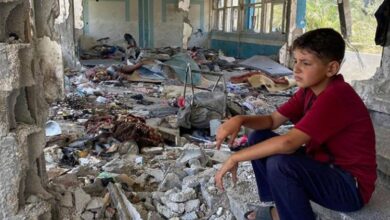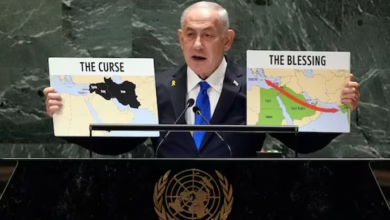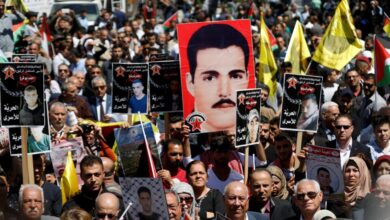One Year After the Al-Aqsa Flood: A Struggle for Palestinian Rights
A year has passed since October 7, the day when the Al-Aqsa Flood Operation changed everything. Life hasn’t been the same since then. The operation reminded the world that the resistance is still strong and that Right of Return is a core part of every Palestinian’s identity who was forced to leave their home, holding onto the key as a symbol of hope that they will return one day. But now, after the first year, what’s next? What are the plans for the future, and what challenges do people face today? Is this the start of another Nakba, or could it be a decisive step toward freedom?
What is the Al-Aqsa Flood?
After years of Israeli occupation and violence, the Al-Aqsa Flood Operation was launched on October 7, 2023, marking what has been called the “largest resistance attack on Israel”. This operation involved coordinated ground, sea, and air assaults, with resistance fighters infiltrating Israeli settlements around Gaza. They used methods such as crossing the border fence and deploying naval commandos from the sea, as well as paratroopers from the Qassam Brigade’s Falcon Unit. The operation, announced by Mohammed Deif, the Chief of Staff of the Al-Qassam Brigades, targeted military sites, airports, and fortified positions.
In its first few hours, the operation led to the deaths of hundreds of Israelis, both soldiers and settlers, and the capture of over 100 people, including soldiers. This forced Israel to close airports in the central and southern regions, canceling many flights to Ben Gurion Airport.
In response, the Israeli military launched Operation Iron Swords, beginning with heavy airstrikes on Gaza. Sirens blared across the settlements surrounding Gaza, and the Israeli army began evacuating all residents from these areas. Early the next day, Israeli airstrikes targeted Hamas leadership in Gaza’s Al-Bureij refugee camp, while naval forces claimed to have eliminated five Palestinian fighters who infiltrated Zikim near the northern border with Gaza.
Israeli Massacres Since October 7
Since the beginning of the Al-Aqsa Flood Operation, the number of martyrs has reached 41,870, according to the Palestinian Central Bureau of Statistics. Among those killed, 16,891 were children and 175 were journalists. Approximately 1.9 million Palestinians have been displaced in Gaza. The ongoing violence has resulted in the destruction of over 120,000 buildings. Estimates from Asharq Al-Awsat suggest that the total cost of damages from the first three months of the conflict is around $18.5 billion.
According to the Defense for Children International (DCI) , the massacres committed by Israel since October 7 have forced schools to close, leading to severe malnutrition among children and resulting in thousands of disabilities. Furthermore, one year after the Al-Aqsa Flood Operation, Israel has opened a new front against Hezbollah in Lebanon. In addition to the destruction of infrastructure and hospitals, the spread of diseases has led to a significant healthcare crisis in the region.
Achievements Since October 7: What Has Been Accomplished?
Since the start of the Al-Aqsa Flood operation on October 7, significant achievements have emerged, despite the intense military response from Israel. The Palestinian resistance demonstrated remarkable resilience, reaffirming that Al-Aqsa Mosque is not just a place of worship but a symbol of Palestinian identity and perseverance. This conflict has brought renewed attention to the Palestinian cause on the global stage. Notably, South Africa has filed a case against Israel in the International Court of Justice, seeking to hold it accountable for alleged genocide in Gaza.
This case highlights ongoing violations against the Palestinian people, particularly as some Arab nations pursue normalization with Israel. It serves as a strong reminder that normalizing relations with a state accused of committing atrocities equates to supporting injustice. Additionally, the conflict has inflicted severe damage on Israeli military and civilian infrastructure, affecting airports and increasing pressure on the Israeli government due to the capture of over 100 individuals, including soldiers.

Key Lessons Learned from the Al-Aqsa Flood Operation
1. Unity of the Palestinian Stance in Critical Times
The Al-Aqsa Flood operation demonstrated that Palestinians can unite when their sacred sites and national dignity are at stake. The mosque emerged as a unifying symbol for all Palestinians.
2. The Vital Role of Media and Social Media
In today’s digital age, online media has been crucial in sharing the realities of the situation in Palestine. Platforms like Twitter , Instagram and Facebook have exposed Israeli violations, allowing the world to witness the events in real-time.
3. Strength of Popular Will Against Military Superiority
Despite Israel’s advanced military power, the Palestinian resistance showed that popular will can confront this force. The resilience against siege and destruction reflects the strength and conviction of the Palestinian people.
4. Using Boycotts as a Tool to Pressure the Occupation
Boycotts have emerged as an effective weapon for supporting the Palestinian cause. Initiatives like the (BDS) movement have highlighted Israeli crimes and pressured international companies and governments to reconsider their dealings with Israel. These actions are not merely symbolic; they serve as powerful means of economic and political pressure while fostering global solidarity with the Palestinian people.
Israeli Strikes and Casualties on the Anniversary of October 7
On the anniversary of October 7, the Israeli army carried out several attacks in Gaza, leading to significant civilian casualties. In Jabalia refugee camp, an airstrike killed 10 civilians. A bombing in Rafah resulted in two deaths and seven injuries. Additionally, an attack near Sheikh Radwan Pool claimed one life and injured seven others. In a drone strike targeting tents at Shuhada al-Aqsa Hospital in Deir al-Balah, 11 citizens were reported injured, highlighting the ongoing violence and its impact on civilians
The Al-Aqsa Flood operation marked a significant moment in the Palestinian struggle for rights and dignity. Despite the ongoing challenges faced by the Palestinian people, this operation demonstrated that resilience and determination are powerful tools against occupation. One year later, Al-Aqsa remains a symbol of steadfastness, and the Palestinian cause continues to be central in the fight for freedom and justice. As the world watches, the spirit of resistance endures, reminding us all of the importance of solidarity and advocacy for the Palestinian people.




